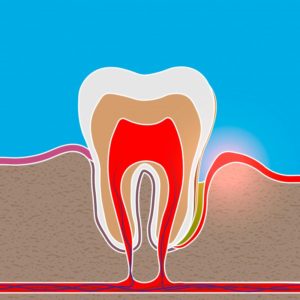Periodontal Pockets: What are They & How Can You Get Rid of Them?
October 19, 2023

At each of your checkups and cleanings, your dentist and hygienist will examine your smile for signs of gum disease, which is one of the most common oral health conditions in the world. This includes measuring the pockets of your gums to make sure they don’t become too deep, leading to the accumulation and collection of harmful oral bacteria that can lead to severe infections. If you learn that you have periodontal pockets, there are ways to address them. Read on to learn more about this oral health concern and how you can address it.
What are Periodontal Pockets?
Pockets can form between the gums and teeth if plaque and tartar are left to accumulate around the edges of teeth (where the gums attach to them). Without routine brushing and flossing, tartar and bacteria will continue to build-up on the teeth, leading to gum inflammation and the first stages of gum disease, called gingivitis.
As the gums swell, pockets will begin to form, pulling the soft tissue away from your teeth and creating small hideouts for more plaque, food debris, and bacteria. With time, they can deepen, eventually threatening the supportive foundation of your teeth by eroding both the gums and bone. When left untreated, deepening periodontal pockets can eventually lead to tooth loss.
Treating Gum Disease & Shrinking Periodontal Pockets
At your routine checkups, your dentist will measure the pockets of your gums to determine their depth and whether intervention is necessary. In some cases, a simple professional cleaning can minimize the tartar accumulation and improve your condition. However, if your periodontal pockets have begun to stretch and affect the roots of your teeth and underlying bone, your dentist may require more specialized treatment, like scaling and root planing or antibiotic therapy.
Prevention with At-Home Care
Another great way to protect your teeth, gums, and bone is with a good at-home dental hygiene routine. Your dentist may even recommend a prescription toothpaste or mouthwash to enhance your current routine or help slow or stop the progression of your condition. Some other measures you can take to protect your smile from gum disease:
- Replace your toothbrush once you start to notice the bristles fraying, or every three months.
- Brush your teeth at least twice a day for two minutes each time and floss daily.
- Use a soft-bristled toothbrush and be mindful of not brushing your teeth too hard, as this could lead to gum recession.
Early diagnosis of gum disease is crucial to reversing the symptoms, which is why routine checkups and cleanings with your dentist are so important. During these appointments, they’ll be able to help you create a plan of action to preserve your smile both in-office and at-home, including prescription oral hygiene products and scheduling treatments like a deep cleaning.
About the Author
Dr. Vanina Arrechea has over 20 years of experience helping patients preserve their smiles with early gum disease intervention. She offers a wide range of services, including effective scaling and root planing periodontal therapy and treats patients of all ages. If it has been longer than six months since you last visited the dentist, or you’re noticing the early signs of gum disease, schedule an appointment by visiting Daily Smiles Dental Dallas’ website or call 214-233-9460.
No Comments
No comments yet.
RSS feed for comments on this post.
Sorry, the comment form is closed at this time.
